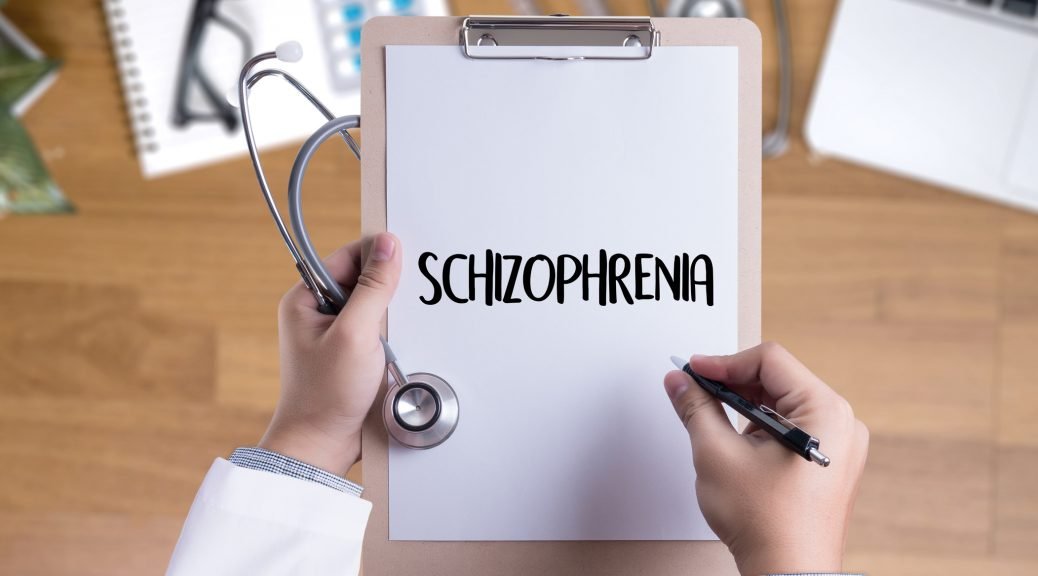Schizophrenia Spectrum and Other Psychotic Disorders DSM-5 Diagnostic Codes: Overview
Psychiatric diagnosis that fall within the category of schizophrenia spectrum and other psychotic disorders are characterized by abnormalities in one or more of the following five categories: hallucinations, delusions, disorganized thinking, disorganized or abnormal motor behavior (including catatonia) negative symptoms. This section includes information related to each of the specific schizophrenia spectrum and other psychotic disorders included in the DSM-5. These include delusional disorder, brief psychotic disorder, schizophreniform disorder, schizophrenia, schizoaffective disorder, substance/medication-induced psychotic disorder, psychotic disorder due to another medical condition and catatonia.
Psychotic disorders involve a variety of both positive and negative as well as some related cognitive symptoms. Positive symptoms involve thoughts and behaviors that you would not usually expect while negative symptoms involve the absence of expected experiences. Some of the basic positive symptoms include hallucinations and delusions, as well as thinking or movement disorders in which the individual seems to lose touch with reality. Hallucinations are sensory experiences such as visual and auditory hallucinations, olfactory hallucinations, gustatory hallucinations (tasting), or tactile or somatic hallucinations in which a person feels things that are not really there or do not seem to have an actual physical stimulus. Delusions are rigid beliefs that do not seem to have any basis in reality and from which an individual cannot be persuaded otherwise. Auditory hallucinations seem to be the most common and tactile hallucinations are frequently associated with withdrawal or intoxication from substances. Olfactory and gustatory hallucinations often indicate a possible underlying medical problem. Disorganized thoughts often referred to as thought disorder involves disruptions in thinking in such a way that communication becomes difficult. Disorganized or abnormal motor behavior frequently referred to as movement disorder, includes agitation, recurrent motions or an inability to respond or move in relation to specific stimuli such as with catatonia.
Negative symptoms within the schizophrenia spectrum category include a lack of motivation, pleasure or engagement in what are believed to be normal activities of daily living or the normal experiencing of emotion. Problems with cognitive symptoms are usually related to having a difficulty with executive functioning, memory or attention.
Schizophrenia Spectrum and Other Psychotic Disorders: Prevalence
According to the APA (2013) psychotic disorders are fairly uncommon, citing prevalence rates of disorders within the schizophrenia spectrum category to range from 0.2% to 0.7%. These do not account for any cross-cultural considerations that are not identified in the DSM-5 but seem to be commonly found in specific cultures throughout the world.
Individuals who experience psychotic disorders have various characteristics and experiences. For about 50% of the individuals diagnosed within this category, they experience a lifelong struggle of trying to maintain their symptoms and a modest level of functioning in their lives. A small minority of individuals who have a later age of onset and frequently a higher level of functioning, seem to be able to manage their symptoms more adequately over their lifetime.
The presence of positive symptoms of psychosis does not always indicate the presence of a psychotic disorder. Medical conditions and substance use and abuse can also lead to the onset and often the exacerbation of psychotic symptoms. In many or most cases, it is probably better for a mental health clinician to refer clients with psychotic symptoms for a thorough medical examination.
Cause and Treatment:
At the present time, researchers have not determined the cause of schizophrenia and other psychotic disorders. Medical conditions and substance use as well as other mental health conditions can lead or contribute to the severity of schizophrenia spectrum and other psychotic disorders. Studies have found a strong genetic connection among individuals with schizophrenia spectrum disorders and have identified various physiological conditions associated with psychosis. Individuals with first-degree relatives who have a condition within the schizophrenia spectrum may be as much as 10 times higher risk of developing the symptoms of psychotic disorders. Neuroscientific researchers have found that individuals with schizophrenic spectrum disorders have different brain structures and physiological components from those who do not.
The main focus of the treatment of schizophrenia and related disorders includes medications for the relief of symptoms and the management of relapse. Psychological interventions are used to promote coping, and for preventing relapse, providing assistance through supportive measures to attain the highest level of functioning in an individual’s activities of daily life.
The same treatment principles seem to apply to all disorders within the schizophrenic spectrum. In the acute phase, clinicians will try to manage the most acute symptoms through medication management and supportive services. Following the medication management of the acute symptoms, clinicians may then focus more on psychosocial treatments to reduce stress and assist the client and their families through psychoeducation and supportive services to maintain a relatively higher managed level of psychosis that allows them to function at the highest level possible in their lives. Finally, as they continue with their medications, clinicians can then attend to preventing relapse through psychological treatments which include skills training, psychoeducation, cognitive behavioral therapy, family interventions, supported employment and other psychological support services within the treatment community. Strong therapeutic relationships have been identified to be very important in assisting and promoting more positive attitudes and compliance with medications.
Please see below the specific schizophrenia spectrum and other psychotic disorders diagnostic codes as well as important diagnostic and treatment information.
Schizophrenia Spectrum and Other Psychotic Disorders DSM-5 Diagnostic Codes:
301.22 (F21) Schizotypal (Personality) Disorder
297.1 (F22) Delusional Disorder
Specify whether: Erotomanic type, Grandiose type, Jealous type, Persecutory type, Somatic type, Mixed type, Unspecified type
298.8 (F23) Brief Psychotic Disorder
Specify if: With marked stressor(s), Without marked stressor(s), With postpartum onset
295.40 (F20.81) Schizophreniform Disorder
Specify if: With good prognostic features, Without good prognostic features
295.90 (F20.9) Schizophrenia
___.__ (__.__} Schizoaffective Disorder
Specify whether:
295.70 (F25.0) Bipolar Type
295.70 (F25.1) Depressive Type
___.__ (__.__) Substance/Medication-Induced Psychotic Disorder
Note: See the criteria set and corresponding recording procedures for substance-specific codes and ICD-9-CM and ICD-10-CM coding.
Specify if: With onset during intoxication, With onset during withdrawal
___.__ (__.__) Psychotic Disorder Due to Another Medical Condition
Specify whether:
293.81 (F06.2) With Delusions
293.82 (F06.0) With Hallucinations
293.89 (F0 61) Catatonia Associated With Another Mental Disorder (Catatonia Specifier)
293.89 (F06.1) Catatonia Disorder Due to Another Medical Condition
293.89 (F06.1) Unspecified Catatonia
Note: Code first 781.99 (R29.818) other symptoms involving nervous and musculoskeletal systems.
298.8 (F28) Other Specified Schizophrenia Spectrum and Other Psychotic Disorder
298.9 (F29) Unspecified Schizophrenia Spectrum and Other Psychotic Disorder
Diagnostic Information and Criterion for Schizophrenia Spectrum and Other Psychotic Disorders adapted from the Diagnostic and Statistical Manual of Mental Disorders Fifth Edition American Psychological Association by Paul Susic Ph.D. Licensed Psychologist


